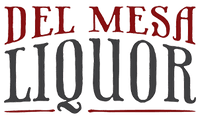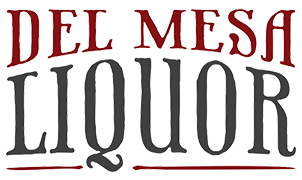There's no denying that popping a bottle of bubbly is a celebratory moment, whether it's to ring in the New Year, toast a wedding, or enjoy a special occasion. But when selecting the correct type of bubbly, the options can be overwhelming. Champagne and sparkling wine are two of the most popular choices, but what's the difference?
While many people interchange the terms "champagne" and "sparkling wine" interchangeably, " they are not the same. Champagne is a specific type of sparkling wine produced exclusively in France's Champagne region using particular grape varieties and a strictly controlled production process.
On the other hand, sparkling wine is a much broader category that encompasses any wine with bubbles, which can be produced using various methods and grape varieties in many regions worldwide.
Understanding the differences between champagne and sparkling wine can help you choose the right bubbly for your occasion and budget. From production methods and aging to taste and pairing, several vital factors distinguish these two popular types of wine.
So, let's explore the differences between champagne and sparkling wine and learn how to choose the perfect bottle for your next celebration.
What Is Champagne?
Champagne is a sparkling wine from the Champagne region in northeastern France. To be considered champagne, the wine must follow strict regulations. It must be made from specific grape varieties, such as Chardonnay, Pinot Noir, and Pinot Meunier, and produced using the traditional method.

The traditional method involves a second fermentation in the bottle. After the wine is bottled, yeast and sugar are added to it. The bottle is then sealed with a crown cap and left to ferment for several months. During this time, the yeast eats the sugar, producing carbon dioxide and creating bubbles in the champagne. This process is known as "secondary fermentation."
After the fermentation process, the yeast settles at the bottom of the bottle.
The champagne is then aged for several years before the yeast is removed through "riddling." The bottles are gradually rotated until the yeast settles in the neck of the bottle, where it is then frozen and canned. The bottle is then topped with wine, and a cork is added.
Champagne has a reputation for being luxurious and expensive. This is partly due to the strict regulations governing its production and the history and prestige of the Champagne region.
What Is Sparkling Wine?
Sparkling wine is a broad term for any wine containing carbon dioxide bubbles. It can be made in many different regions around the world and using a variety of methods.

The most common method for making sparkling wine is the Charmat method. In this method, the wine undergoes secondary fermentation in a large tank rather than in individual bottles. This method is more cost-effective and efficient than the traditional method used for champagne.
Another method for making sparkling wine is the transfer method. In this method, the wine undergoes secondary fermentation in individual bottles, but the wine is then transferred to a large tank to remove the yeast sediment. The wine is then bottled and corked.
The final method for making sparkling wine is the carbonation method. This method involves injecting carbon dioxide into still wine to create bubbles. This method is often used for inexpensive sparkling wines.
Differences Between Champagne And Sparkling Wine
Now that we've explored what champagne and sparkling wine are, let's take a closer look at the differences between the two.
1. Location
One of the most significant differences between champagne and sparkling wine is the location where they are produced. Champagne is only produced in the Champagne region of France. On the other hand, sparkling wine can be produced in many different regions worldwide, including California, Spain, Italy, and Australia.
2. Grape Varieties
Champagne is made from specific grape varieties, including Chardonnay, Pinot Noir, and Pinot Meunier. On the other hand, sparkling wine can be made from a wide variety of grape varieties, including Chardonnay, Pinot Noir, Pinot Meunier, Riesling, and Chenin Blanc.
3. Production Method
Champagne and sparkling wine are produced using different methods. Champagne must be produced using the traditional method, which involves secondary fermentation in the bottle. Sparkling wine can be produced using various methods, including the Charmat, transfer, and carbonation methods.
4. Aging
Champagne is typically aged for a longer period than sparkling wine. Champagne must be aged for at least 15 months before it is released for sale. Some champagnes are aged for several years before they are sold.
Sparkling wine, on the other hand, is typically aged for a shorter period. This is because it is often produced using the Charmat method, a faster secondary fermentation method. However, some sparkling wines are aged for several years, such as vintage sparkling wines.
5. Cost
Champagne is typically more expensive than sparkling wine. This is partly due to the prestige of the Champagne region and the strict regulations governing its production. However, some high-end sparkling wines can be just as expensive as champagne.
6. Taste
Champagne and sparkling wine also have different taste profiles. Champagne is known for its complex and nuanced flavors resulting from the traditional production method and the aging process. Champagne can have citrus, apple, pear, and brioche flavors, among others. Sparkling wine, on the other hand, is often fruitier and less complex in flavor. This is because the Charmat method often produces it, which allows for less contact with the yeast sediment.
7. Pairing
Champagne and sparkling wine also pair differently with food. Champagne is often paired with rich, creamy dishes like caviar, oysters, and foie gras. It also pairs well with salty snacks like potato chips and popcorn. Sparkling wine, on the other hand, is often paired with lighter dishes, such as salads, seafood, and sushi.
Final Thoughts
In conclusion, while champagne and sparkling wine are bubbly Liquor, they are not the same. Champagne is a specific type of sparkling wine produced using strict regulations and traditional methods in the Champagne region of France.
On the other hand, sparkling wine is a broad term that refers to any wine with bubbles and can be produced using various methods and grape varieties in many regions worldwide. Understanding the differences can help you make a more informed decision when choosing a celebratory liquor for your next special occasion.
 Log in
Log in
 My Wishlist
My Wishlist Reward Program
Reward Program Corporate Gifts
Corporate Gifts Customer Help
Customer Help


